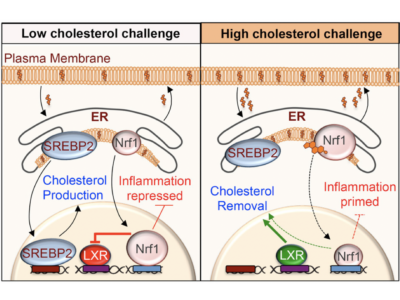Organelles are mini-organs and carry out compartmentalized and specific functions inside cells. We are particularly focused on the endoplasmic reticulum and its metabolic biology and how it interacts and coordinates the function of other organelles such as mitochondria. Under this umbrella, we explore the requirements to maintain organelle integrity and function in two broad pillars. First, we investigate the molecular subcellular architecture of the cells, which we see as a new frontier in metabolic homeostasis and how theses structural changes relate to its function. Second, we explore organelle dysfunction and the generation of stress and inflammatory responses that set the stage for metabolic disease.
The ER and Molecular Guardians of Metabolic Biology
The ER is a central organelle for protein synthesis and protein folding in the cell, and as such, is key to the maintenance of cellular homeostasis. As the demands on ER function fluctuate between cells and under different stresses, ER is equipped with adaptive responses to maintain its integrity. The most studied adaptive response system is the unfolded protein response (UPR), which senses the presence of unfolded or misfolded protein in the ER lumen through IRE1, PERK, and ATF6 branches which engage robust quality-control systems to restore equilibrium in the ER.
Subcellular Architecture as a New Frontier in Metabolic Homeostasis
Subcellular, organization displays tremendous architectural complexity. In eukaryotes, specific biochemical reactions are compartmentalized at particular structures, including membrane-enclosed-organelles, that create a physical barrier to avoid the uncontrolled transport of macromolecules and metabolites within the cell. Although the characteristic form and function of these organelles are conserved across species, cells have developed ways to diversify the “formation” of the structures and interactions between organelles.



